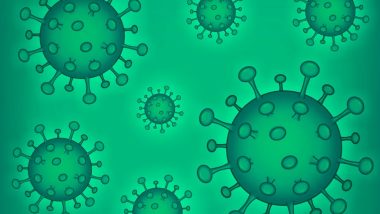New York, February 12: A newly discovered virus that belongs to the same family as smallpox has claimed its first victim in Alaska, health officials announced on Friday. The virus, known as Alaskapox, was detected in an elderly man who died in late January after suffering from kidney and respiratory failure.
According to the Mirror report, the man, who lived in a remote area of the Kenai peninsula south of Anchorage, was one of only seven confirmed cases of Alaskapox in the state since 2015. He was also the first case reported outside of the interior region of Alaska, where the virus was first identified in an adult in Fairbanks. What is Disease X? All You Need to Know About the Virus Believed to Be 20 Times Deadlier Than COVID-19.
What is Alaskapox?
Alaskapox is a double-stranded-DNA virus that comes from the same genus as smallpox, monkeypox and cowpox, which are known to cause severe infections in humans and animals. However, Alaskapox has so far shown only mild symptoms in most patients, such as a localized rash and swollen lymph nodes. None of the other six patients required hospitalization or treatment, and they all had healthy immune systems, according to the Alaska Department of Public Health.
The fatal case, however, was complicated by the fact that the man had a weakened immune system due to a pre-existing condition, which made him more vulnerable to the virus. His diagnosis also took months to confirm, as the initial tests showed positive for cowpox, a more common and less harmful virus. It was only after further testing by the Centers for Disease Control and Prevention (CDC) that the virus was identified as Alaskapox. What Is Brucellosis Disease? As Two Tests Positive in Kerala, Know Symptoms, Causes and Treatment of Bacterial Infection.
Alaskapox Claims First Life
The source of the man’s infection remains a mystery, as he had no recent travel history or contact with other people. Health officials suspect that he may have contracted the virus from a cat that he shared his home with, who often hunted small mammals like voles and shrews. These rodents are believed to be the natural reservoirs of Alaskapox, as they have been found to carry the virus in their blood and saliva. The cat, however, tested negative for the virus, but it could have transmitted it to the man through its claws, which scratched him when his symptoms began.
The man first noticed a red bump in his right armpit in September and was prescribed antibiotics by a local clinic. However, his condition worsened over the next six weeks, and he developed fatigue and pain. He was airlifted to a hospital in Anchorage, where he underwent a series of tests and received intravenous medications. His condition improved slightly after a week, but he succumbed to the virus in late January.
Health officials have urged the public to be aware of the signs and symptoms of Alaskapox and to seek medical attention if they develop a rash or a fever. They have also advised people to avoid contact with wild rodents and to keep their pets vaccinated and indoors. They have stressed that Alaskapox is not a serious threat to the general population but rather a rare and isolated occurrence.
“Alaskapox is a very low-risk virus for most people, and there is no evidence of human-to-human transmission,” said Julia Rogers, a state epidemiologist. “However, we want to make clinicians and the public more aware of what Alaskapox is and how to prevent and treat it.”
(The above story first appeared on LatestLY on Feb 12, 2024 10:23 AM IST. For more news and updates on politics, world, sports, entertainment and lifestyle, log on to our website latestly.com).













 Quickly
Quickly




















